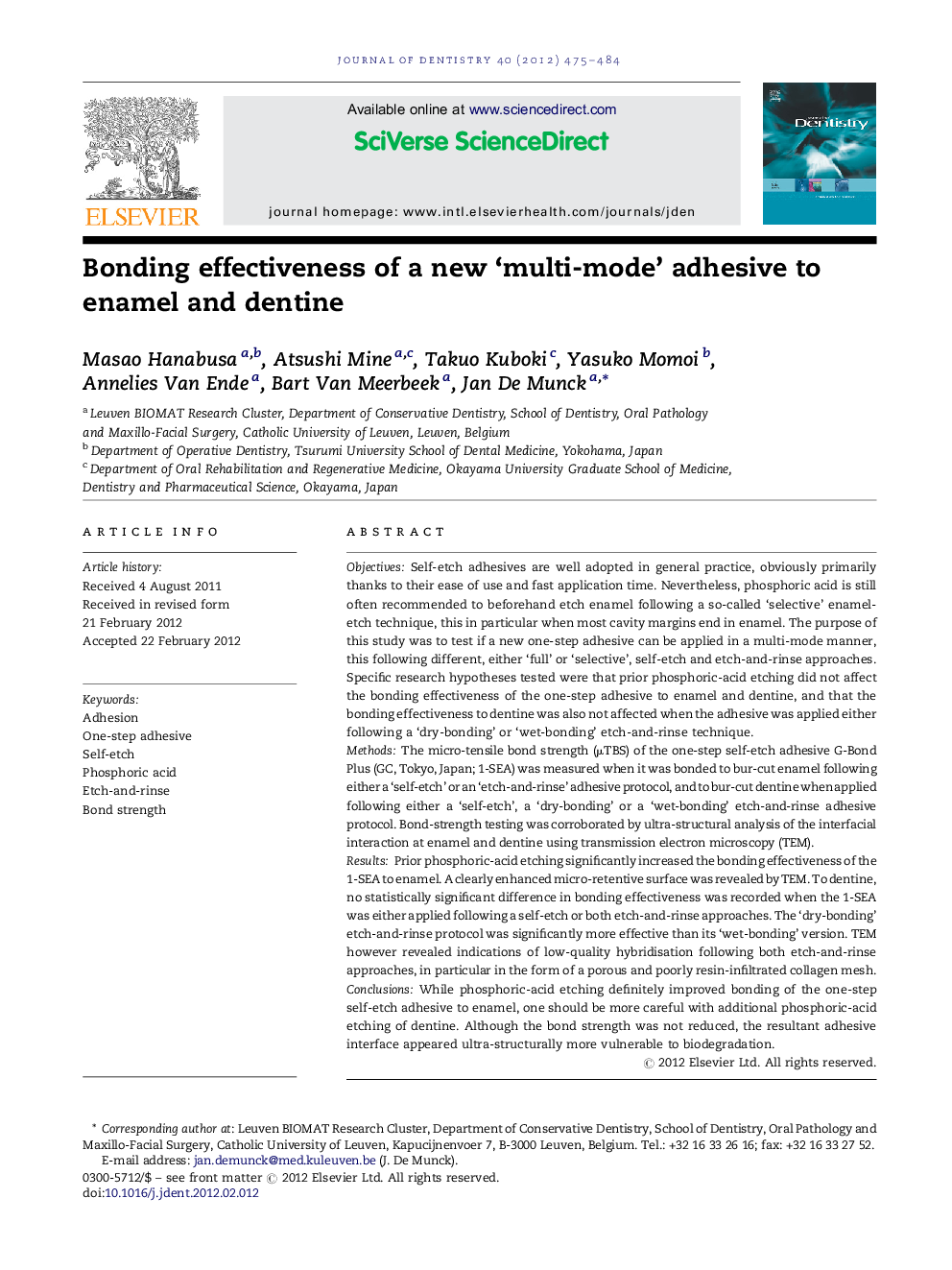| کد مقاله | کد نشریه | سال انتشار | مقاله انگلیسی | نسخه تمام متن |
|---|---|---|---|---|
| 3145186 | 1197050 | 2012 | 10 صفحه PDF | دانلود رایگان |

ObjectivesSelf-etch adhesives are well adopted in general practice, obviously primarily thanks to their ease of use and fast application time. Nevertheless, phosphoric acid is still often recommended to beforehand etch enamel following a so-called ‘selective’ enamel-etch technique, this in particular when most cavity margins end in enamel. The purpose of this study was to test if a new one-step adhesive can be applied in a multi-mode manner, this following different, either ‘full’ or ‘selective’, self-etch and etch-and-rinse approaches. Specific research hypotheses tested were that prior phosphoric-acid etching did not affect the bonding effectiveness of the one-step adhesive to enamel and dentine, and that the bonding effectiveness to dentine was also not affected when the adhesive was applied either following a ‘dry-bonding’ or ‘wet-bonding’ etch-and-rinse technique.MethodsThe micro-tensile bond strength (μTBS) of the one-step self-etch adhesive G-Bond Plus (GC, Tokyo, Japan; 1-SEA) was measured when it was bonded to bur-cut enamel following either a ‘self-etch’ or an ‘etch-and-rinse’ adhesive protocol, and to bur-cut dentine when applied following either a ‘self-etch’, a ‘dry-bonding’ or a ‘wet-bonding’ etch-and-rinse adhesive protocol. Bond-strength testing was corroborated by ultra-structural analysis of the interfacial interaction at enamel and dentine using transmission electron microscopy (TEM).ResultsPrior phosphoric-acid etching significantly increased the bonding effectiveness of the 1-SEA to enamel. A clearly enhanced micro-retentive surface was revealed by TEM. To dentine, no statistically significant difference in bonding effectiveness was recorded when the 1-SEA was either applied following a self-etch or both etch-and-rinse approaches. The ‘dry-bonding’ etch-and-rinse protocol was significantly more effective than its ‘wet-bonding’ version. TEM however revealed indications of low-quality hybridisation following both etch-and-rinse approaches, in particular in the form of a porous and poorly resin-infiltrated collagen mesh.ConclusionsWhile phosphoric-acid etching definitely improved bonding of the one-step self-etch adhesive to enamel, one should be more careful with additional phosphoric-acid etching of dentine. Although the bond strength was not reduced, the resultant adhesive interface appeared ultra-structurally more vulnerable to biodegradation.
Journal: Journal of Dentistry - Volume 40, Issue 6, June 2012, Pages 475–484